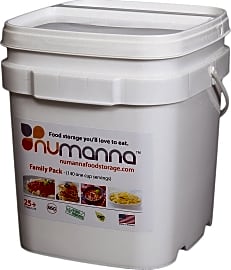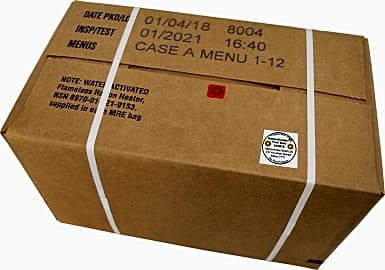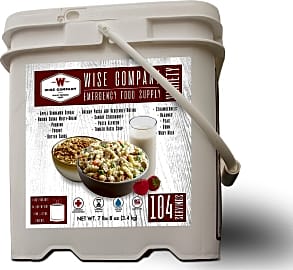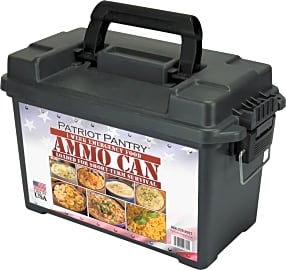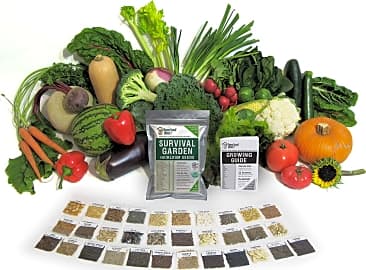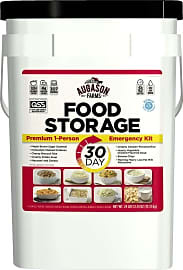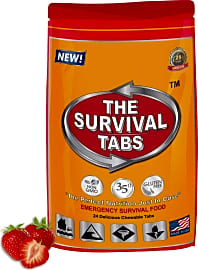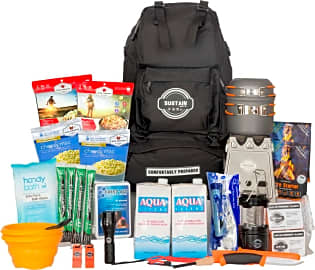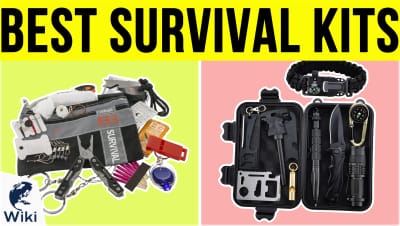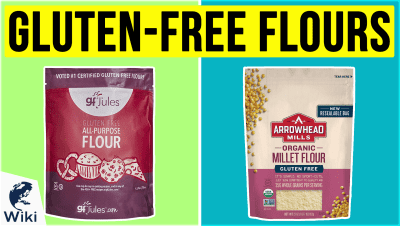The 10 Best Survival Foods

This wiki has been updated 40 times since it was first published in May of 2015. Whether you're a hiker, camper, backpacker, or doomsday prepper awaiting the apocalypse, you will appreciate this selection of survival foods. It includes easy to prepare and hardy rations that make perfect additions to any emergency kit and are designed to last for years, helping to keep yourself or your family nourished during any situation, from a hurricane to a zombie invasion. When users buy our independently chosen editorial choices, we may earn commissions to help fund the Wiki.
Editor's Notes
February 15, 2020:
Currently, several Patriot Pantry products are experiencing availability issues, so we have opted to remove them. These include the Patriot Seeds Survival Vault, but not to worry. If you want to keep a variety of seeds on hand for true emergencies, the Open Seed Vault Survival Garden is a good choice thanks to a well-balanced selection of 32 varieties.
When it comes to food that's ready at a moment's notice, it remains tough to top the popular Mountain House Essential Bucket. It will feed one person for 3.5 days, and features foods that most people would actually enjoy eating, including chili mac with beef. For an option that will cover a longer timeframe, consider the NuManna INT and its 144 meals. With its 25-year shelf life, it will give you peace of mind for a long time to come. There's also the traditional option, Military Surplus MREs, which come in cases of 12. You should expect to receive a random assortment, however, which can be a dealbreaker for truly picky eaters.
Finally, we have removed the Valley Food Storage Grab and Go, which has become tough to find, and replaced it with the Sustain Supply Co. Premium Emergency Kit. It's an all-in-one survival kit that boasts everything from water to emergency blankets. There are options for two or four people; as you might expect, the latter is a bit heavy at over 25 pounds.
Special Honors
The Preppi GoBox You don't need an underground bunker to be prepared thanks to The Preppi GoBox. Inside, you'll find just enough gear to keep you going through a three-day emergency, including food bars, water, a glow stick, and a first aid kit. There are even playing cards to stave off boredom. preppi.co
My Patriot Supply 1-Year Offering one person 2,000 calories a day for 360 days, the My Patriot Supply 1-Year will give you all the peace of mind you could need, but for a relatively hefty investment, as you might expect. The meals come in 24 buckets that are sturdy and water-resistant, and there's plenty of variety, from black bean soup to chocolate pudding. mypatriotsupply.com
When Your Body's Under Stress: Nutritional Notes
While you're at it, powdered vitamins and minerals couldn't hurt, just to be sure you're covering all the bases.
It's great to know you have a supply of survival kits on hand. Sustenance that requires little prep and lasts for years must give you some peace of mind, but really being prepared for anything from a natural catastrophe to a taxing hike means looking a little more deeply into what your body needs during crisis.
To survive means literally "to live through" a situation. But when disaster strikes, at home, on the trail, or during travel, what you probably really want is to ensure your family thrives. So, take a good look at the nutrition labels (I know it seems boring, but it's your family we're talking about), and get serious about providing complete nutrition for whatever you'll be living through.
You'll notice that some survival foods are heavy on sugar and/or carbs. That's because the brain needs glycogen -- which, put simply, is derived from sugar -- to function well. You might be familiar with that early-morning brain fog that somehow seems to clear when you snarf a sweet roll.
Simple carbs, like sugar and white flour can, in a manner of speaking, hit the brain pretty much right away. This allows your foggy head to clear enough for you to finish that weekly report before your mid-morning meeting. Of course, you don't want to indulge in sugar and simple carbs every day (because of the crash that follows the spike in energy), but in an emergency, your body will be grateful.
Fats play a pretty heavy role in most survival kits, as well. Fats help you feel full longer: this is key when you're battling extreme circumstances. On a hike, for example, you won't have to keep stopping to eat to maintain energy.
Some kits, you'll find, offer a nutrient ratio similar to what was adopted by NASA for 1960s astronauts. That is, 51 percent carbohydrates, 32 percent fats and 17 percent protein. However, today's nutritionists tend to recommend amping up protein when you are under stress.
So, you might consider adding protein tablets to your store of kits. While you're at it, powdered vitamins and minerals couldn't hurt, just to be sure you're covering all the bases.
And of course, keep as much water on hand as you'll need, both for drinking and for prepping the meals.
Survival Foods: Methods of Dehydration
You may not be an astronaut, but when it comes to survival food, you probably have some of the same standards.
Good survival food needs to be lightweight and compact, but it also has to keep your energy up and meet your needs for protein, carbs, and fat .
The difficulty lies is in making it taste good. Food during the early space programs didn’t pass the taste test. It was so bad, in fact, that the astronauts -- disciplined and accustomed to enduring physical extremes -- complained. It took a team of food scientists several years to develop better-tasting options for space flight.
You may not be an astronaut, but when it comes to survival food, you probably have some of the same standards.
Dehydrated foods are foods from which the moisture has been removed. Even prehistoric peoples dried foods to preserve them, typically by placing them in the sun. Removing the moisture helps stop the spoilage process. In the 1800s, foods were often dried using heated air. This method was used to prep rations for World War II soldiers.
These days, foods might be dehydrated using tunnel, kiln, cabinet, or vacuum driers. The less time the food takes to dry, the better it will taste. Vacuum drying is great for fruits and veggies. Spray drying -- converting liquid to fine mist and then heating it -- is one good way to make powdered dairy products. Freeze-drying works especially well for meats. It allows foods to hold onto both nutrition and flavor for several years.
Freeze-dried foods were put to the test during the Gemini and Apollo space ventures. Meals were “prepared by quick-freezing cooked items, which were then placed in a vacuum chamber where they were heated to remove all water,” according to the National Air and Space Museum. The food was “then vacuum-packed in a four-ply laminated container with a water valve at one end.”
NASA explorers first had only cold water to re-hydrate their rations. Hot water later became available during flights, and the food became a lot more palatable.
Most of the foods in our recommended kits have been freeze-dried. You may not need a hot water gun to reconstitute them, or a restraint pouch to keep the food from floating off in zero-gravity conditions, but the flavor and nutrition you’ll enjoy surely owe a debt to NASA.
Survival Prep: It's Not Just for Mountain Men
Survivalism in its literal form dates all the way back to the first cave dwellers foraging for food to give them enough energy to go about their daily tasks.
Many millennia later, around the advent of the nuclear explosive, the US government actually encouraged ordinary citizens to construct their own home bomb shelters. The well-stocked, underground bunker seemed to some an even safer alternative.
The well-stocked, underground bunker seemed to some an even safer alternative.
As panic over the bomb subsided, folks who still kept up a shelter were seen by some as a bit kooky, on the lunatic fringe. They were often the butt of late-night TV and tabloid jokes. But at the turn of the millennium, citizens again resorted to prep mode. The events of 9/11 provided yet another trigger.
Today's preppers are a truly mixed bag. Some have an eye toward natural disasters, such as earthquakes, floods, or hurricanes. Others seem to anticipate man-made circumstances that would lead to apocalyptic conditions. Preppers come from all walks of life. There are suburban moms, white-collar workers, blue-collar families, and rural residents. Some are driven by ideology, while others see themselves as practical. Naturally, the survival foods industry happily serves them all.
In any case, learning to provide for ourselves and our families during harsh and unexpected conditions builds a sense of resiliency. And there's nothing off-the-wall about that.


